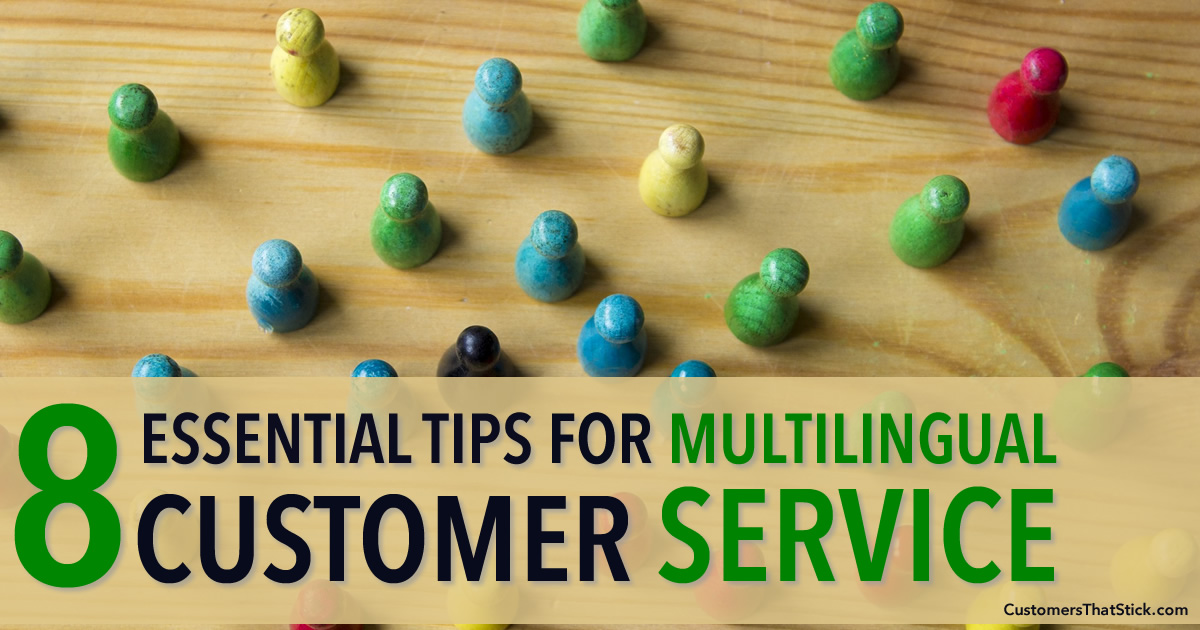

Guest Poster: Elisa Abbott
The following is a guest post from Elisa Abbott.
Elisa Abbott is a freelancer whose passion lies in creative writing. She completed a degree in Computer Science and writes about ways to apply machine learning to deal with complex issues. Insights on education, helpful tools and valuable university experiences – she has got you covered;) When she’s not engaged in assessing translation services for PickWriters you’ll usually find her sipping cappuccino with a book.
It isn’t difficult to imagine the frustration, or in some cases fear, that someone feels when they can’t get help in the language they speak. Not only does that person have a problem in the first place, not being unable to get help in a language they can understand is doubly frustrating. Without multilingual customer service, you could be leaving customers with the impression that you just don’t care that much about them.
That should be motivation enough. In an article published by Harvard Business Review, more than half of consumers are willing to pay more for information in their own languages.
Of course, the need for multilingual customer support isn’t met simply by hiring a couple of bilingual telephone support agents. To truly meet the needs of all of your customers, your goal should be to provide them with the same customer support experience as anyone else.
Yes, that’s a lofty standard and is hard to scale. You may not always reach it, but you can get pretty close. These eight essential tips should help.
When you present customers with translated content, there’s no guarantee that it will be completely perfect. It’s impossible to create self-service content in your native language that meets every customer’s needs.
By simply letting customers know that they are accessing translated content, most will understand that there may be some nuances and details that may not be linguistically perfect. Rather than focusing on that, many will appreciate that they can access materials in their own language.
A strong knowledge base is an important part of any customer service solution. As you build that knowledge base, consider the languages that your customers speak. By making that material available in multiple languages, you open up a coveted, self-service option to more customers.
It takes more than language fluency to provide great customer service experiences. A successful, multilingual customer support effort must include cultural understanding. This is because people from different regions don’t simply speak different languages; they also communicate differently.
It’s important for customer service agents to keep this in mind when communicating with customers and to consider this dynamic when translating materials for customer support.
For example, many western cultures have a more direct approach to communication than many eastern cultures. A good support agent won’t just speak the language, they will understand these subtleties.
Yes, I did mention above that you can manage customer expectations by letting them know they are accessing translated material; however, that doesn’t mean you shouldn’t make every effort to present customers with content that has been translated and localized by professionals.
From machine translations to crowdsourced translations to professional translation, take the time to source out the best option for your budget.
Your content probably reflects your branding. This may include your customer service scripts. When you are translating these elements to provide customer support to all of your customers, you may need to sacrifice some of that personality in the interest of clarity.
Slang terms, catchphrases, buzzwords, and other idiomatic speech may create the ‘personality’ you want with most of your customers. However, for non-native speakers, these things can obscure your message and simply make things more confusing.
When it comes to online support, considering incorporating images into your support material. Pictures are an ideal tool for making instructions clearer, and for providing a visual explanation in case the written one is not accurate enough.
Visuals can be added to user manuals, knowledge base materials, and other content that customers can access directly.
Sometimes, language barriers may not be apparent at first. A customer service agent might end a call thinking the customer fully understands the solution to their problem.
Unfortunately, that may not always be the case. That’s why it is so important that customer service agents ask unambiguous questions that can be answered with a yes or no. This can help them ensure that there is truly understanding. The same is true for recapping conversations just to make sure all points are clear.
Fortunately, this is an area where effective customer service training can help.
Re-engineering customer support solutions to be multilingual can be a daunting task. If possible, start from the ground up. When meeting the needs of your multilingual customers becomes a priority at the beginning, you are better able to meet those customers’ needs in the first place.
Some areas to consider are:
Multilingual Customer Service is a Worthwhile Investment
Whether you are working hard to establish a global presence, or simply trying to meet the needs of the customers in your area, it’s well worth the effort to implement a multilingual customer service solution. By following the eight tips listed above, your work towards this end is much more likely to be a success.
Guest Post Disclaimer: Guest Posts on the Customers That Stick® blog are submitted by individual guest posters and in no way represent the opinions or endorsement of CTS Service Solutions, its owners or employees. CTS Service Solutions does not represent or guarantee the truthfulness, accuracy, or reliability of statements or facts posted by Guest Posters on this blog.
© 2011-2025 CTS Service Solutions, LLC.
All rights reserved.
Legal Information | Privacy Policy
How to Cite this Site